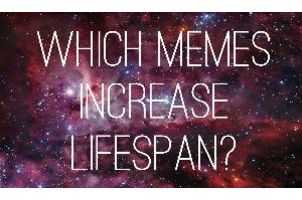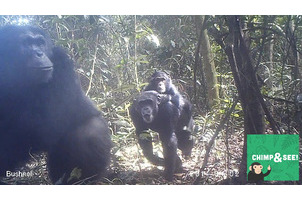Search for Thysanozoon sp. [sp. 1 Humann] returned 123 results.
-
Biodiversity Science project: HuMaIN (Human- and Machine-Intelligent Software Elements for Cost-Effective Scientific Data Digitization)
In the era of data-intensive scientific discovery, Big Data scientists in all communities spend the majority of their time and effort collecting, integrating, curating, transforming, and assessing quality before actually performing discovery analysis...

-
Biodiversity Science project: The Human Memome Project
We want to be able to find correlations between people's ideas, behaviours and aspirations (all of which we are calling memes) and their health, wellbeing and lifespan. If we can find ideas, memes, behaviours and aspirations that could potentially increase health, wellbeing and lifespan we use this data to create an academic dataset, educational tools and further citizen science and quantified self practices...

-
Biodiversity Science project: Chimp&See
Studies of human evolution often focus on the fossils and artifacts left by our early ancestors. However, we can also make inferences about human origins by studying our closest living relatives: chimpanzees, the great apes of West and Central Africa. Because humans and chimps are so closely related, patterns in chimpanzee behavior may tell us quite a bit about how the earliest humans lived and evolved...

-
Biodiversity Science project: Big City Birds
We humans are capable of dramatically altering the landscape. Cities are a familiar and extreme example of this change. Intriguingly, some animals can adapt to these changed environments by flexibly changing their behaviour. Big City Birds aims to learn more about some of these species and their behavioural adaptations. The project focuses on five bird species: Sulphur-crested Cockatoo, Australian Brush-turkey, Australian White Ibis, Little Corella, and Long-billed Corella...

-
Biodiversity Science project: Phylo
Phylo is a game in which participants align sequences of DNA by shifting and moving puzzle pieces. Your score depends on how you arrange these pieces. You will be competing against a computer and other players in the community. Though it may appear to be just a game, Phylo is actually a framework for harnessing the computing power of mankind to solve a common problem -- Multiple Sequence Alignments...

-
Biodiversity Science project: MPA Watch
In 2012, San Diego's Marine Protected Area (MPA) network went into effect. To help assess the effectiveness and functions of our MPAs, the region will undergo a 5-year review in 2015, looking at ecological impacts and human use. To collect a robust data source for human use of our protected areas, we are training up citizen scientists to conduct visual transects of our MPAs in San Diego County...
-
Biodiversity Science project: Mozak: Brainbuilder
The key to Mozak is to allow humans to do what they are good at, and computers to do what they are good at. In this case, humans exceedingly outperform computers with their ability to resolve and trace objects in 3 dimensions. Although computers can complete the reconstruction of robustly traced neurons, many neurons have delicate and highly branched structures that your eyes will distinguish far better...

-
Biodiversity Science project: Family Dog Project
The Family Dog Project was founded in 1994 to study the behavioral and cognitive aspects of the dog-human relationship. It is currently the largest dog research group in the world. Assist in research investigating the evolutionary and ethological foundations of dog-human relationship by taking one of our online surveys.
-
Biodiversity Science project: Play Citizen Science Games for National DNA Day!
April 25 is National DNA Day! 2018 is a special anniversary, celebrating 15 years since the completion of the Human Genome Project...

-
Biodiversity Science project: Our Ocean in COVID-19
What’s happening in coastal communities, along coastlines, and in the oceans as humans respond to COVID-19 is unprecedented. Tourism, fishing, recreational uses, have all changed dramatically. It is expected this event will have widespread and long-term impacts on humans and nature. In this project, we aim to track these patterns along coastlines and across the ocean around the world in real-time. Your observations are essential for making this happen...

